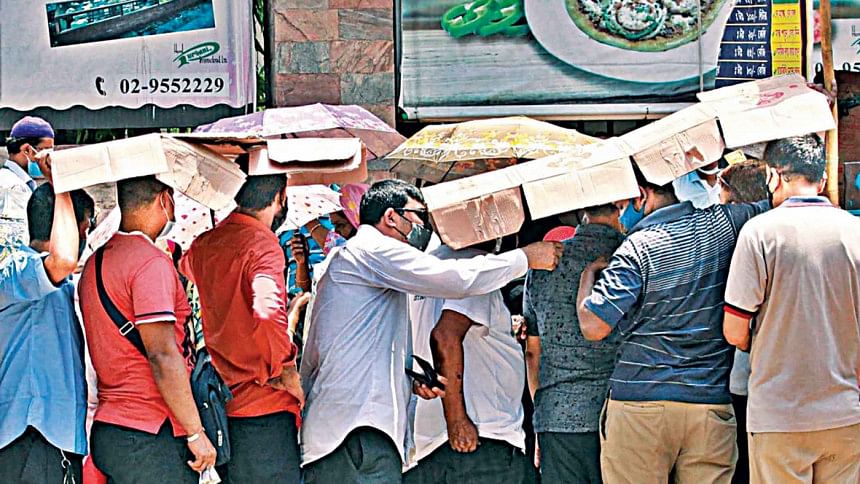Unpacking the Covid-19 stimulus packages: The devil is in the details

The history of designing and delivering policy-driven economic stimulus packages is customarily traced back to the "New Deal" which was implemented in the United States during the Great Depression of the 1930s. The second milestone in the chronicle of wide-scale use of stimulus packages relates to the Great Recession of 2008, which was brought about by the global economic and financial crisis. The underlying logic of these public policy interventions was informed by the Keynesian postulate that if there is a fall in the market demand for investment and employment, then the government needs to come forward with fiscal support in order to protect consumption and employment. So, the move to counteract the socio-economic fallouts of the pandemic did not come as a surprise when all sources of economic wisdom readily recommended expansionary fiscal policy stance. This has, in turn, created the third milestone in this regard. Evidently, most of the governments followed suit and Bangladesh was no exception.
Bangladesh government has to be given credit for the early announcement of its first stimulus package with the advent of Covid-19 in the country. While the first case of infection was spotted on March 8, 2020, the first stimulus package was declared on March 25, 2020. Indeed, on the eve of the Bangla New Year, on April 14, 2020, the prime minister quite appropriately laid out the basic features of her government's policy approach. The policy approach highlighted the intended push for higher public expenditures, support to the private sector, infusion of more liquidity in the market and expansion of social safety net programmes. Guided by these policy commands, the government sequentially deployed a large set of support measures ranging from food assistance to cash transfer to provision of subsidised credit to easing of controls on money supply.
To address the livelihood concerns generated by the scourge, the government has rolled out a total of 25 support measures (including the two recently announced cash support programmes). Eighteen of these were new interventions, while another seven related to the expansion of existing programmes. The total value of these programmes has been estimated to be Tk 1,250 thousand million. Around Tk 773 thousand million (i.e. about 2.76 percent of GDP) worth of support was allocated in the fiscal year 2020 (FY20), and another Tk 477 thousand million (i.e. 1.71 percent of GDP) was earmarked for FY21.
Admittedly, comparing stimulus packages across countries is a difficult task. Yet, the data from the Asian Development Bank indicates that the size of Bangladesh's stimulus packages is the third largest in South Asia (behind India and Pakistan), and as share of GDP (2019), it ranks fourth (behind India, Pakistan and Nepal).
However, as it is said, the devil is in the details. Let us tease out three such details of these packages from the vantage points of their taxonomy and deployment in the country.
Fringe role of direct fiscal assistance
All recent surveys have revealed that employment and income have been severely squeezed by the pandemic-induced economic slowdown. As a result, households have experienced reduced food intake, dissaving and indebtedness along with negative fallouts for health and education. These debilitating effects have been most pronounced for the traditionally "left behind" as well as the newly "pushed behind" people. Empirical evidence suggests that in order to protect household-level consumption and to withhold deepening of inequality, fiscal interventions in the form of food assistance and cash transfer happen to be most resultative.
Of the total 25 packages announced, there are 14 relating to fiscal supports, of which 2 involved food assistance and 12 involved cash transfer. Thus, the fiscal support related packages accounted for less than 20.5 percent of the total allocation. The remaining 11 packages were "hybrid" in nature as these concerned the government putting its own money to support bank loans at subsidised interest rates. These hybrid schemes account for more than 79.5 percent of the total allocation.
Food assistance and cash transfer programmes were only a little above 4 percent and 1.5 percent of the total allocation in the fiscal year 2019-20 (FY20) respectively. Although certain improvements were observed in allocative prioritisation in 2020-21 (FY21), the hybrid components continued to dominate with about 56 percent of the total annual outlay. However, within the fiscal support programmes for FY21, direct cash transfer to affected poor households and distressed workers accounted for less than 10 percent of the annual provision. The packages declared so far for FY21 did not include any food assistance.
Two cash support programmes for the poor households, announced in the third week of April 2021, are yet to be fully rolled out. Additionally, the allocation for direct cash support programme (underwritten by the European Union and German government) for the workers of the apparel exporting industries and for additional beneficiaries of the existing social safety programmes are also to be disbursed.
Nonetheless, the spectacular jump in direct fiscal support component in FY21 is quite intriguing.
Inflated measure of fiscal support
A closer look at the composition of the fiscal support packages reveals a curious picture as a number of not directly Covid-related schemes have been included there. For example, a big chunk of the earmarked fiscal support in FY21 concerns customary revenue budget provision for agriculture subsidy (45 percent of annual fiscal allocation) and a farm mechanisation programme (more than 15 percent of the annual fiscal allocation). Further, the government's regular rice procurement exercise has been included here. Moreover, a home construction programme launched to celebrate Bangabandhu's 100th birthday anniversary has been put in this kitty.
Thus, if we take out these regular fiscal activities of the government, the actual pandemic-related direct fiscal support for FY21 can be estimated to be Tk 53 thousand million. This figure is only a little above 11 percent of the total annual allocation, which is less than 0.2 percent of the GDP (FY21). This covers also the two packages of cash incentives for the health workers and other frontline workers.
Accordingly, the relevant figures for FY21 inappropriately inflate the pitiable allocation of fiscal support for the disadvantaged groups directly affected by the pandemic.
Poor delivery of fiscal support programmes
Direct fiscal support measures are not only characterised by negligible allocation, but these channels of allocations also suffered from inordinately poor implementation. A fuller assessment of the state of delivery of the direct fiscal support programmes is inhibited by the lack of relevant data.
Between the two food assistance programmes assigned in the last fiscal year (FY20), the open market sale of rice was fully implemented. In contrast, the other much-required free food distribution programme utilised less than 43 percent of its allocation. As mentioned earlier, no free food distribution programme has been announced for the current fiscal year (FY21).
At the same time, implementation of the cash transfer programme of Tk 2,500 per household for 5 million needy families has been widely criticised due to multiple field-level distortions. The programme finally ended up reaching out to about 3.5 million households. It is difficult to accept that the government was unable to locate an additional 1.5 million poor families, especially when it has been estimated that at least another 10 percent of the population—i.e. around 4.1 million new households—have fallen below the poverty line during the pandemic.
As mentioned earlier, the European Union and German government sourced financial packages for the distressed workers of the export-oriented industries. Meanwhile, financial packages for the additional beneficiaries of the existing safety net programmes are yet to be disbursed. At the same time, honorarium and health insurance packages for the health workers and frontline government employees could not take off substantively.
Deciphering of the announced stimulus packages in Bangladesh brings out three unflattering aspects: Not only peripheral provisions were made to the much-needed direct fiscal support schemes, but they were presented in an overstated way and implemented quite shabbily. Will the situation change in the next fiscal year (2021-22)? May be this time around, we shall find the Divine in the details.
Dr Debapriya Bhattacharya is Distinguished Fellow at the Centre for Policy Dialogue (CPD). Mursalin Hossain is Research Associate (Project), CPD.

 For all latest news, follow The Daily Star's Google News channel.
For all latest news, follow The Daily Star's Google News channel. 



Comments